Find Help
More Items From Ergsy search
-
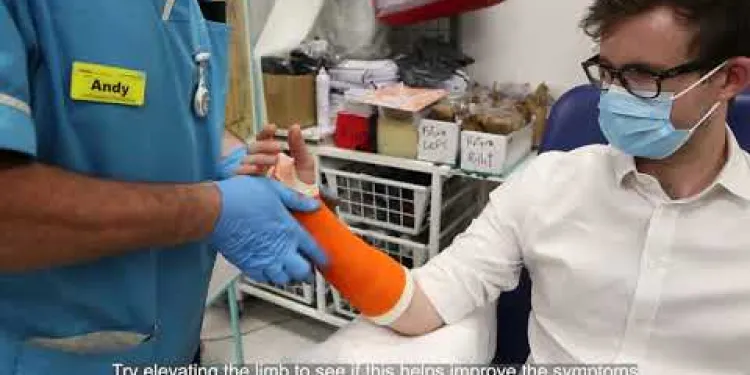
Fracture Clinic: Plaster Casts
Relevance: 100%
-
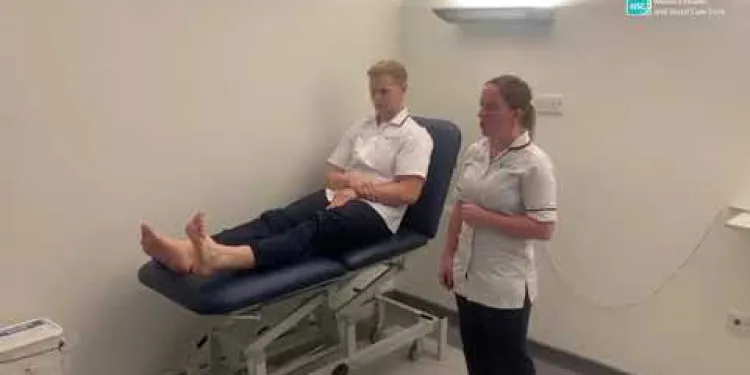
Physiotherapy Exercises following an Ankle Fracture
Relevance: 22%
-

Clinical Handover - Care 24/7
Relevance: 17%
-

Are there clinical trials available for prostate cancer treatment?
Relevance: 16%
-

Is Paillon treatment used in any clinical trials?
Relevance: 16%
-

Clinical depression: Lawrence's story | NHS
Relevance: 15%
-

How do clinics determine if IVF is the right option?
Relevance: 15%
-

Are there any clinical trials supporting Ozempic for weight loss?
Relevance: 15%
-

Do fake weight loss drugs often skip clinical trials?
Relevance: 14%
-
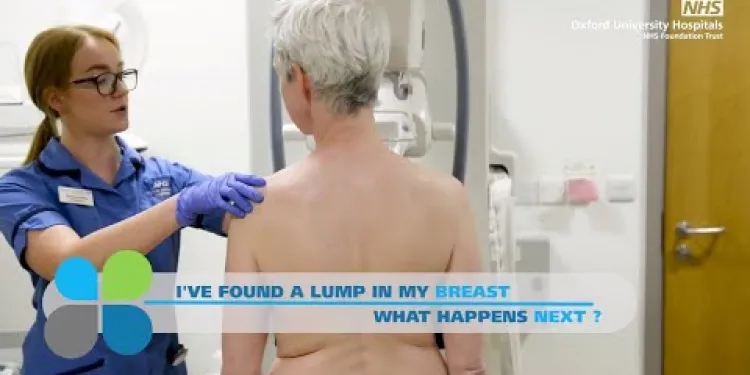
I've found a lump in my breast - What happens next? The breast diagnostic clinic
Relevance: 14%
-
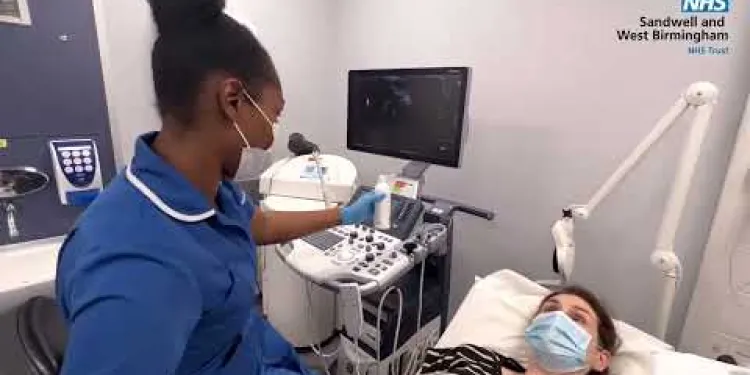
Post Menopausal Bleeding Clinic | A Guide to What Happens at An Appointment
Relevance: 13%
-

I've found a lump in my breast - What happens next? The breast diagnostic clinic
Relevance: 13%
-
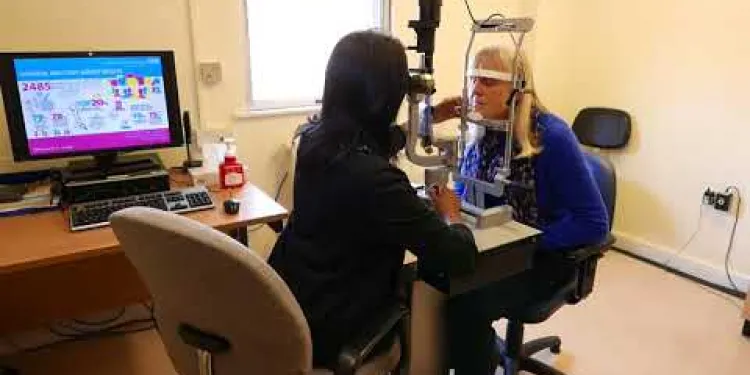
Derbyshire Diabetic Eye Screening - Assessment Clinic Appointment
Relevance: 12%
-

Advice on sports injuries
Relevance: 10%
-

Club foot | NHS
Relevance: 9%
-

How do I choose the right clinic for a hair transplant in Turkey?
Relevance: 9%
-

What medical tests are used to diagnose whiplash?
Relevance: 9%
-

What's the difference between chemical and physical sunscreens?
Relevance: 8%
-

How is whiplash diagnosed?
Relevance: 7%
-

What to expect of a DXA Scan
Relevance: 7%
-
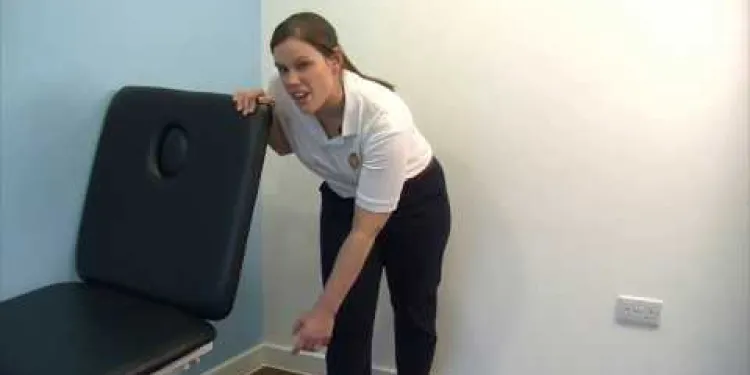
DBTH VFC DISLOCATED SHOULDER
Relevance: 7%
-

Is language a barrier for a hair transplant in Turkey?
Relevance: 6%
-

Patient video: What to expect when having a bone scan
Relevance: 6%
-
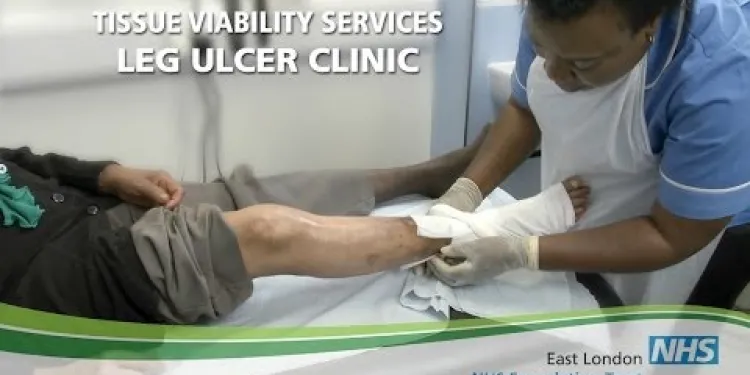
Leg Ulcers
Relevance: 6%
-

How should I prepare for a hair transplant in Turkey?
Relevance: 6%
-

How is advanced prostate cancer treated?
Relevance: 6%
-

Are hair transplants in Turkey safe?
Relevance: 6%
-

The Different Roles in Sexual Health and Family Planning UK
Relevance: 5%
-

What is a hip replacement?
Relevance: 5%
-

What areas of the NHS are using AI in 2024?
Relevance: 5%
-
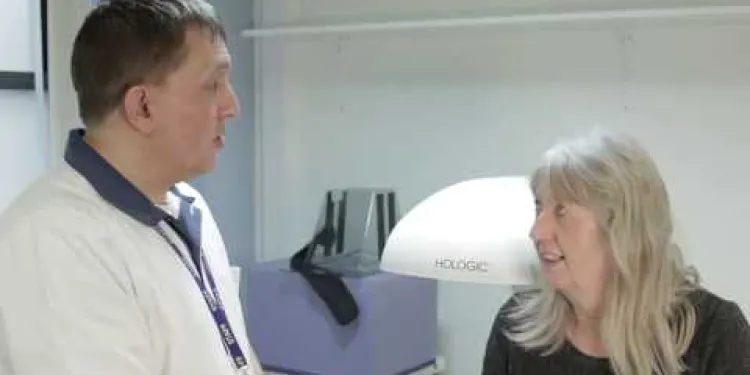
What to expect of a DXA Scan
Relevance: 5%
-

Falls and Falls Prevention
Relevance: 5%
-

How can I treat mosquito bites?
Relevance: 5%
-

Do NHS dentists cover cosmetic treatments?
Relevance: 5%
-

How can primary care support workers contribute to patient care improvement?
Relevance: 5%
-

Where can I get the flu vaccine?
Relevance: 5%
-

How should I choose a provider for Botox treatments?
Relevance: 5%
-
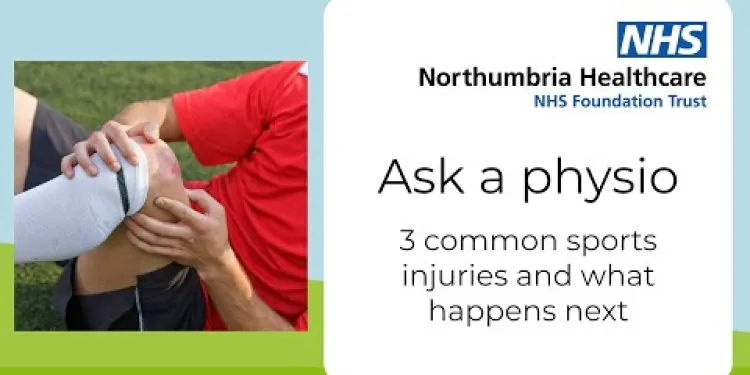
Ask a physio: 3 common sports injuries and what happens next
Relevance: 5%
-

Total Hip Replacement
Relevance: 5%
-

What techniques are used for hair transplants in Turkey?
Relevance: 5%
Fracture Clinic: Plaster Casts
Visiting a fracture clinic in the United Kingdom often involves addressing broken bones using various treatment methods. One common and effective treatment is the application of plaster casts. Understanding the purpose, application process, and aftercare of plaster casts can help patients manage their recovery effectively.
Purpose of Plaster Casts
Plaster casts are used to immobilize and support broken bones while they heal. This rigid shell is essential for ensuring that the bone fragments stay in the correct position, which aids in proper healing and helps alleviate pain. Plaster casts are commonly used for fractures in the arms, legs, wrists, and feet.
Application Process
The process of applying a plaster cast begins with a healthcare professional cleaning and positioning the affected area. A soft padding is then applied to protect the skin. Next, bandages soaked in plaster are carefully wrapped around the injured area and molded to fit. The plaster hardens as it dries, forming a sturdy, protective shell that will support the bone during recovery. It typically takes about 24-48 hours for the cast to completely harden.
Aftercare Tips
After receiving a plaster cast, it is essential to follow specific aftercare instructions to ensure safety and promote healing:
- Keep the cast dry: Avoid getting the cast wet as moisture can weaken the plaster, causing it to lose its supportive properties. Use a waterproof cover during bathing or showering.
- Avoid inserting objects: Do not insert objects into the cast to scratch itches, as this can damage the skin and lead to infections.
- Elevation and rest: Keep the injured limb elevated as much as possible to reduce swelling and pain. Rest is crucial for proper healing.
- Monitor for issues: Be aware of any signs of complications, such as increased pain, swelling, numbness, or changes in skin color. Contact your healthcare provider if any of these symptoms occur.
Removal of Plaster Casts
Once the bone has sufficiently healed, typically after several weeks to months, the plaster cast will be removed by a healthcare professional using a special cast saw. This saw can cut through the plaster without harming the skin underneath. For some individuals, physiotherapy may be recommended to regain full strength and mobility in the affected area.
Understanding the role and care of plaster casts at a fracture clinic is integral to a smooth recovery process. By following medical advice and taking proper care, patients in the UK can ensure that their broken bones heal correctly and efficiently.
Fracture Clinic: Plaster Casts
When you visit a fracture clinic in the UK, it is usually to fix a broken bone. One way doctors fix broken bones is by using plaster casts. Knowing why they use plaster casts, how they put them on, and how to take care of them can help you get better more quickly.
Purpose of Plaster Casts
Plaster casts keep broken bones still so they can heal. This hard cover makes sure the bones stay in the right place. It helps the bone heal and stops it from hurting too much. Doctors use plaster casts for broken arms, legs, wrists, and feet.
Application Process
Putting on a plaster cast starts with a doctor or nurse cleaning and getting the broken area ready. They put soft padding on the skin to protect it. Then, they wrap wet plaster bandages around the area and shape them to fit. The plaster dries and turns hard, usually taking 1-2 days. This hard shell supports the bone while it heals.
Aftercare Tips
After getting a plaster cast, it's important to take care of it. Here are some tips:
- Keep the cast dry: Don’t let the cast get wet. Water can make it weak. Use a plastic cover when you bathe or shower.
- Avoid inserting objects: Do not stick anything inside the cast to scratch an itch. This can hurt your skin and cause problems.
- Elevation and rest: Keep the injured part of your body up high to avoid swelling and pain. Rest helps healing.
- Monitor for issues: Watch for any problems like extra pain, swelling, numbness, or skin color changes. Tell your doctor if you notice these.
Removal of Plaster Casts
When the bone has healed, usually after weeks or months, a doctor will take off the plaster cast. They use a special saw that cuts the plaster but not your skin. Sometimes, you might need physiotherapy to help your arm or leg get strong again.
Learning about plaster casts at a fracture clinic helps make recovery easier. By following the doctor’s instructions and taking good care, people in the UK can heal their broken bones the right way.
Frequently Asked Questions
What is a plaster cast?
A plaster cast is a protective shell made from bandages and plaster. It is used to immobilize a broken bone while it heals.
How long will I need to wear my plaster cast?
The duration varies depending on the type and location of the fracture. Typically, it can be anywhere from a few weeks to several months.
Can I get my plaster cast wet?
No, plaster casts should not get wet as water can weaken the cast and reduce its effectiveness. Consider using a plastic cover while bathing.
What should I do if my cast gets wet?
If your cast gets wet, try to dry it with a hairdryer on a cool setting and contact your fracture clinic as soon as possible for further advice.
Can I walk on my plaster cast?
Only walk on your plaster cast if your doctor has given you specific instructions to do so. Some casts are designed to bear weight, while others are not.
How do I relieve itching under my plaster cast?
Itching under the cast can be relieved by gently tapping on the outside of the cast. Do not insert objects into the cast to scratch.
What are the signs my plaster cast is too tight?
Signs include severe pain, swelling, numbness, or a feeling of tightness. Contact your fracture clinic if you experience any of these symptoms.
Can I drive with a plaster cast?
You should avoid driving if you have a plaster cast, as it may impair your ability to drive safely. Consult with your doctor for specific advice.
How should I take care of the skin around my plaster cast?
Keep the skin around your cast clean and dry. You can use a damp cloth to gently clean around the edges of the cast.
What should I do if my plaster cast cracks or breaks?
Contact your fracture clinic immediately for a replacement or repair. Do not attempt to fix it yourself.
Is it normal for my plaster cast to smell?
A mild smell is normal, but if the smell becomes strong or unpleasant, it may indicate an infection. Contact your fracture clinic if this occurs.
Can I decorate my plaster cast?
Yes, you can decorate your plaster cast with markers, but avoid using paint or varnish as they can weaken the cast.
How do I clean my plaster cast?
Plaster casts should not be cleaned with water. If the cast is dirty on the outside, use a dry cloth or a small vacuum to remove dirt.
What should I do if my fingers or toes become swollen, pale or blue?
Contact your fracture clinic immediately, as this could indicate that the cast is too tight and is affecting your circulation.
How will my cast be removed?
Your cast will be removed using a special cast saw, which vibrates to cut through the plaster without harming your skin.
What is a plaster cast?
A plaster cast is a hard bandage that keeps a broken bone in place. It helps the bone heal straight. Here is how it works: - When you break a bone, it can hurt a lot. - A doctor will put the bone in the right place. - They wrap the bone with a special bandage and wet plaster. Once the plaster dries, it becomes hard. This stops the bone from moving. Helpful Tip: - You can use a pillow to lift the cast when sitting or lying down. This helps with swelling and makes you feel better. If you feel uncertain, ask for help from someone you trust.A plaster cast is a hard cover made from cloth and a special mix. It helps keep a broken bone still so it can mend.
How long do I need to wear my plaster cast?
The time it takes for a broken bone to heal is different for everyone. It depends on where the bone is broken and how bad the break is. It can take a few weeks or a few months to get better.
Can I make my plaster cast wet?
No, don't get your plaster cast wet. Water can make it soft and break. Keep it dry to help your arm or leg heal.
If you need to wash, use a plastic bag to cover it in the shower or bath. If you want help, ask someone to show you how to do it right.
No, you should not let plaster casts get wet. Water can make the cast weak and not work well. Use a plastic cover when taking a bath or shower.
What should I do if my cast gets wet?
If your cast gets wet, do this:
- Pat the cast dry with a towel.
- Use a hairdryer on the cool setting to help dry it.
- If it smells or feels funny, tell a grown-up or your doctor.
Here are some tips to keep your cast dry:
- Cover it with a waterproof bag when you shower or bathe.
- Avoid playing in water or getting wet in the rain.
If your cast gets wet, use a hairdryer set to cool to try and dry it. Call your fracture clinic right away for more help.
Can I walk on my plaster cast?
A plaster cast is a hard cover on your arm or leg. It helps broken bones heal.
Ask your doctor if you can walk on your plaster cast. Sometimes you need crutches or a special shoe.
Tools that can help you:
- Crutches: You use these to help you walk.
- Special shoe: This can go over your cast to help you walk.
Only walk on your plaster cast if your doctor says it is okay. Some casts are made for walking, but some are not.
How can I stop itching under my plaster cast?
If your arm or leg is in a plaster cast and it feels itchy, here are some easy steps to help:
- Tap gently on the plaster cast. This can help make the itch go away.
- Keep your cast dry and clean. This is very important!
- You can use a hairdryer on a cool setting. Blow air into the cast. This might help the itch.
- Try to keep your mind busy with games or books.
Remember:
- Do not stick anything inside the cast. This can cause harm or infections.
If the itching is really bad, tell a doctor or nurse. They can give you more help.
If it is itchy under your cast, you can tap gently on the outside of the cast to feel better. Do not put anything inside the cast to scratch.
How can I tell if my plaster cast is too tight?
A plaster cast helps your arm or leg heal. It should not feel too tight. Here are some signs that your cast might be too tight:
- Your fingers or toes feel numb or tingly.
- Your fingers or toes look swollen or turn blue.
- You feel a lot of pain or pressure.
- You can't move your fingers or toes well.
If you notice any of these signs, ask an adult to help you call your doctor. You can also use tools like a timer to remember to check your cast every hour.
Look out for signs like bad pain, swelling, feeling numb, or if it feels very tight. If you feel any of these, call your fracture clinic for help.
Can I drive if I have a plaster cast?
If you have a plaster cast on your arm or leg, you might wonder if it's okay to drive a car.
Here are some things to think about:
- Can you hold the steering wheel safely with the cast?
- Can you press the pedals with your feet if your leg is in a cast?
- Ask a doctor if it's safe for you to drive.
If you are not sure, it is best not to drive. Try asking someone for help or use a taxi or bus.
If you have a plaster cast, it is best not to drive. The cast might make it hard for you to drive safely. Ask your doctor if you are not sure what to do.
How do I look after my skin around my cast?
Here are some tips:
- Keep your cast dry.
- If you can, wash the skin around the cast gently with soap and water.
- If it feels itchy, do not scratch inside the cast. Tap it gently.
- Use lotion on skin that you can reach, but not inside the cast.
- Ask a grown-up if you can use a fan to keep your skin cool.
If you need help, ask someone you trust.
Keep the skin near your cast clean and dry. Use a wet cloth to gently clean around the edges of the cast.
What to do if my plaster cast breaks?
If your plaster cast breaks, tell an adult right away.
They can help you get the cast fixed. You may need to visit the doctor.
Do not try to fix the cast by yourself. It is important to keep the cast strong so your body can heal.
If the broken cast is uncomfortable, try not to move it too much.
You can ask for support from a friend, family member, or caregiver.
Call your fracture clinic right away if you need a new cast or if it is broken.
Do not try to fix it by yourself.
Is it okay if my plaster cast smells?
A little smell is okay. But if the smell gets strong or bad, it might mean there is an infection. If this happens, tell your fracture clinic.
Can I put decorations on my plaster cast?
Yes, you can decorate your plaster cast! Here are some ideas:
- Use markers to draw pictures or write your name.
- Put stickers on it for fun.
- Ask friends and family to sign it.
Remember:
- Don't decorate too much, so the plaster stays strong.
- Avoid getting it wet.
Need help? Ask a grown-up to help you.
Yes, you can draw on your plaster cast with markers. But don't use paint or varnish because they can make the cast weaker.
How can I clean my plaster cast?
It is important to keep your plaster cast clean and dry. Here are some easy steps:
- Keep your cast dry. Cover it with a waterproof bag when you take a bath or shower.
- If your cast gets a little dirty, wipe it gently with a damp cloth. Do not soak it with water.
- Avoid putting anything inside your cast, like pencils or sticks.
- If your cast cracks or gets too dirty, ask a doctor or nurse for help.
You can also ask a family member or a friend for help in keeping your cast clean.
Do not use water to clean plaster casts. If the outside of the cast is dirty, use a dry cloth or a small vacuum to clean it.
What should I do if my fingers or toes get big, white, or blue?
If your fingers or toes get big, white, or blue, you need to tell someone. It might mean something is wrong. Here is what you can do: - Tell a grown-up or someone who can help you. - Keep your fingers or toes warm. Wear mittens or socks. - Move your fingers or toes gently. Wiggle them around. Remember, if it hurts a lot, you should see a doctor.Call your fracture clinic right away. This might mean your cast is too tight and could be stopping your blood from flowing properly.
How will they take off my cast?
The doctor will take off your cast with a special tool. This tool moves very fast and can cut the hard plaster. It will not hurt your skin.
Useful Links
- Ergsy carfully checks the information in the videos we provide here.
- Videos shown by Youtube after a video has completed, have NOT been reviewed by ERGSY.
- To view, click the arrow in centre of video.
- Most of the videos you find here will have subtitles and/or closed captions available.
- You may need to turn these on, and choose your preferred language.
- Go to the video you'd like to watch.
- If closed captions (CC) are available, settings will be visible on the bottom right of the video player.
- To turn on Captions, click settings .
- To turn off Captions, click settings again.
More Items From Ergsy search
-

Fracture Clinic: Plaster Casts
Relevance: 100%
-

Physiotherapy Exercises following an Ankle Fracture
Relevance: 22%
-

Clinical Handover - Care 24/7
Relevance: 17%
-

Are there clinical trials available for prostate cancer treatment?
Relevance: 16%
-

Is Paillon treatment used in any clinical trials?
Relevance: 16%
-

Clinical depression: Lawrence's story | NHS
Relevance: 15%
-

How do clinics determine if IVF is the right option?
Relevance: 15%
-

Are there any clinical trials supporting Ozempic for weight loss?
Relevance: 15%
-

Do fake weight loss drugs often skip clinical trials?
Relevance: 14%
-

I've found a lump in my breast - What happens next? The breast diagnostic clinic
Relevance: 14%
-

Post Menopausal Bleeding Clinic | A Guide to What Happens at An Appointment
Relevance: 13%
-

I've found a lump in my breast - What happens next? The breast diagnostic clinic
Relevance: 13%
-

Derbyshire Diabetic Eye Screening - Assessment Clinic Appointment
Relevance: 12%
-

Advice on sports injuries
Relevance: 10%
-

Club foot | NHS
Relevance: 9%
-

How do I choose the right clinic for a hair transplant in Turkey?
Relevance: 9%
-

What medical tests are used to diagnose whiplash?
Relevance: 9%
-

What's the difference between chemical and physical sunscreens?
Relevance: 8%
-

How is whiplash diagnosed?
Relevance: 7%
-

What to expect of a DXA Scan
Relevance: 7%
-

DBTH VFC DISLOCATED SHOULDER
Relevance: 7%
-

Is language a barrier for a hair transplant in Turkey?
Relevance: 6%
-

Patient video: What to expect when having a bone scan
Relevance: 6%
-

Leg Ulcers
Relevance: 6%
-

How should I prepare for a hair transplant in Turkey?
Relevance: 6%
-

How is advanced prostate cancer treated?
Relevance: 6%
-

Are hair transplants in Turkey safe?
Relevance: 6%
-

The Different Roles in Sexual Health and Family Planning UK
Relevance: 5%
-

What is a hip replacement?
Relevance: 5%
-

What areas of the NHS are using AI in 2024?
Relevance: 5%
-

What to expect of a DXA Scan
Relevance: 5%
-

Falls and Falls Prevention
Relevance: 5%
-

How can I treat mosquito bites?
Relevance: 5%
-

Do NHS dentists cover cosmetic treatments?
Relevance: 5%
-

How can primary care support workers contribute to patient care improvement?
Relevance: 5%
-

Where can I get the flu vaccine?
Relevance: 5%
-

How should I choose a provider for Botox treatments?
Relevance: 5%
-

Ask a physio: 3 common sports injuries and what happens next
Relevance: 5%
-

Total Hip Replacement
Relevance: 5%
-

What techniques are used for hair transplants in Turkey?
Relevance: 5%


